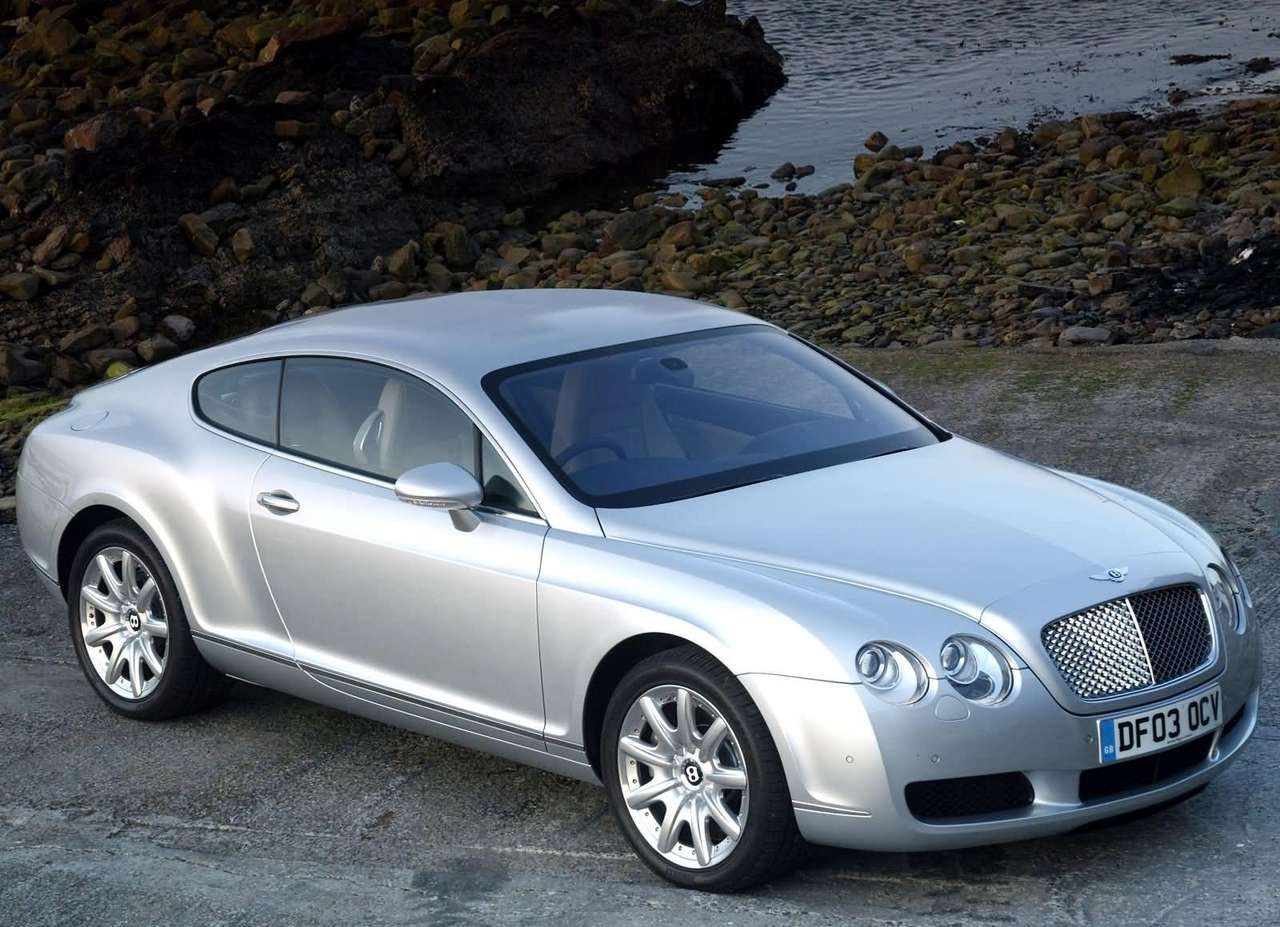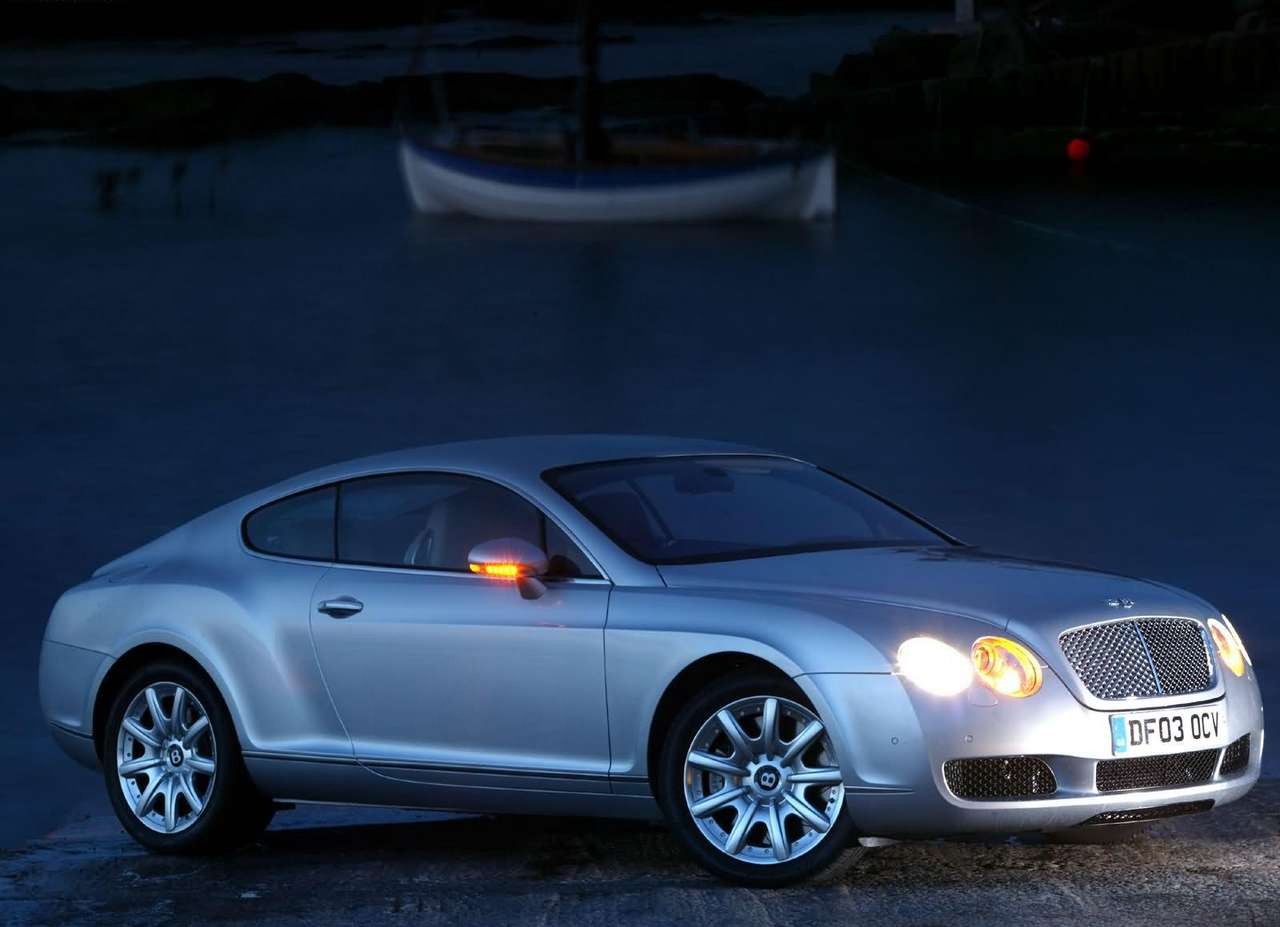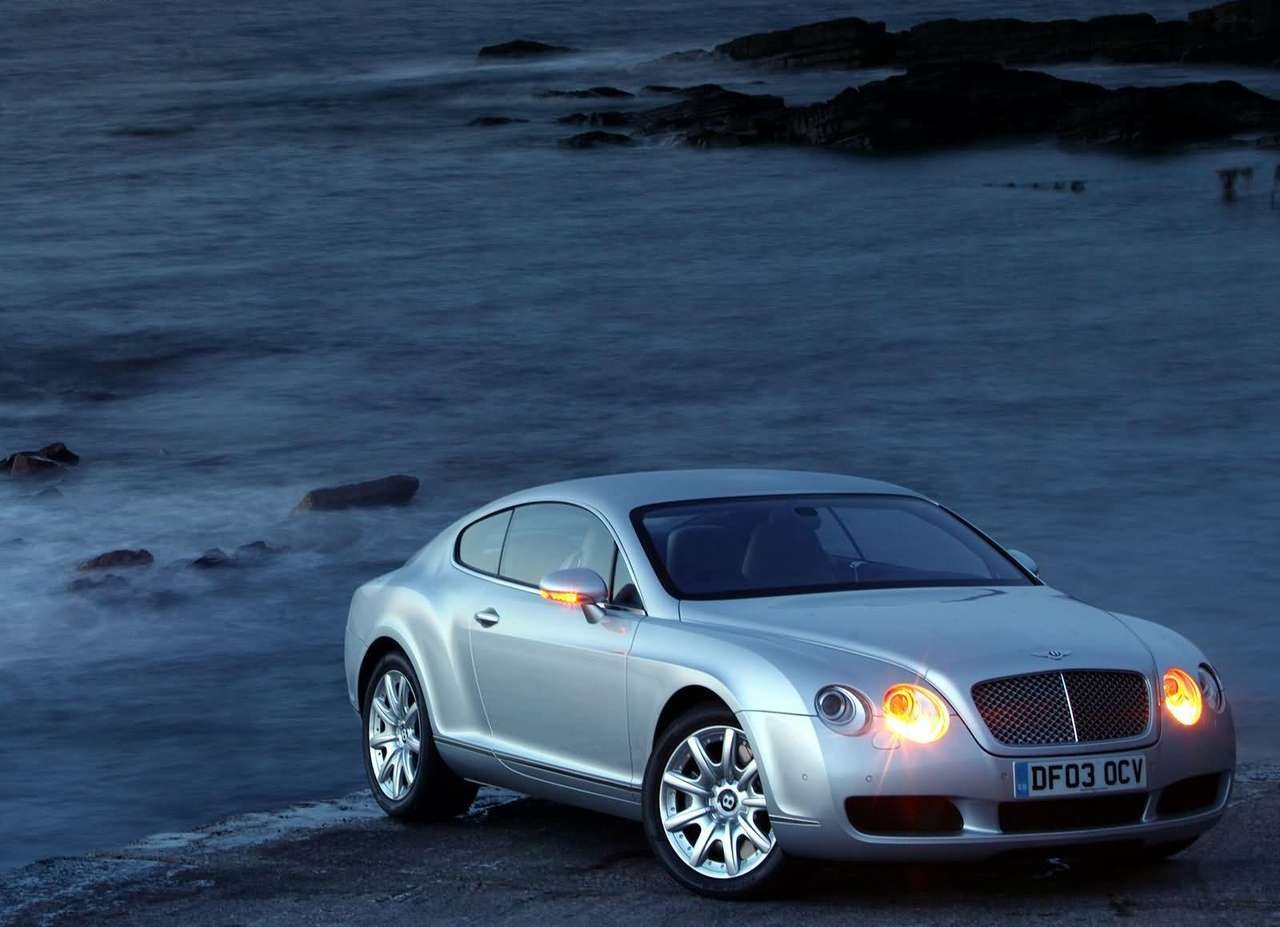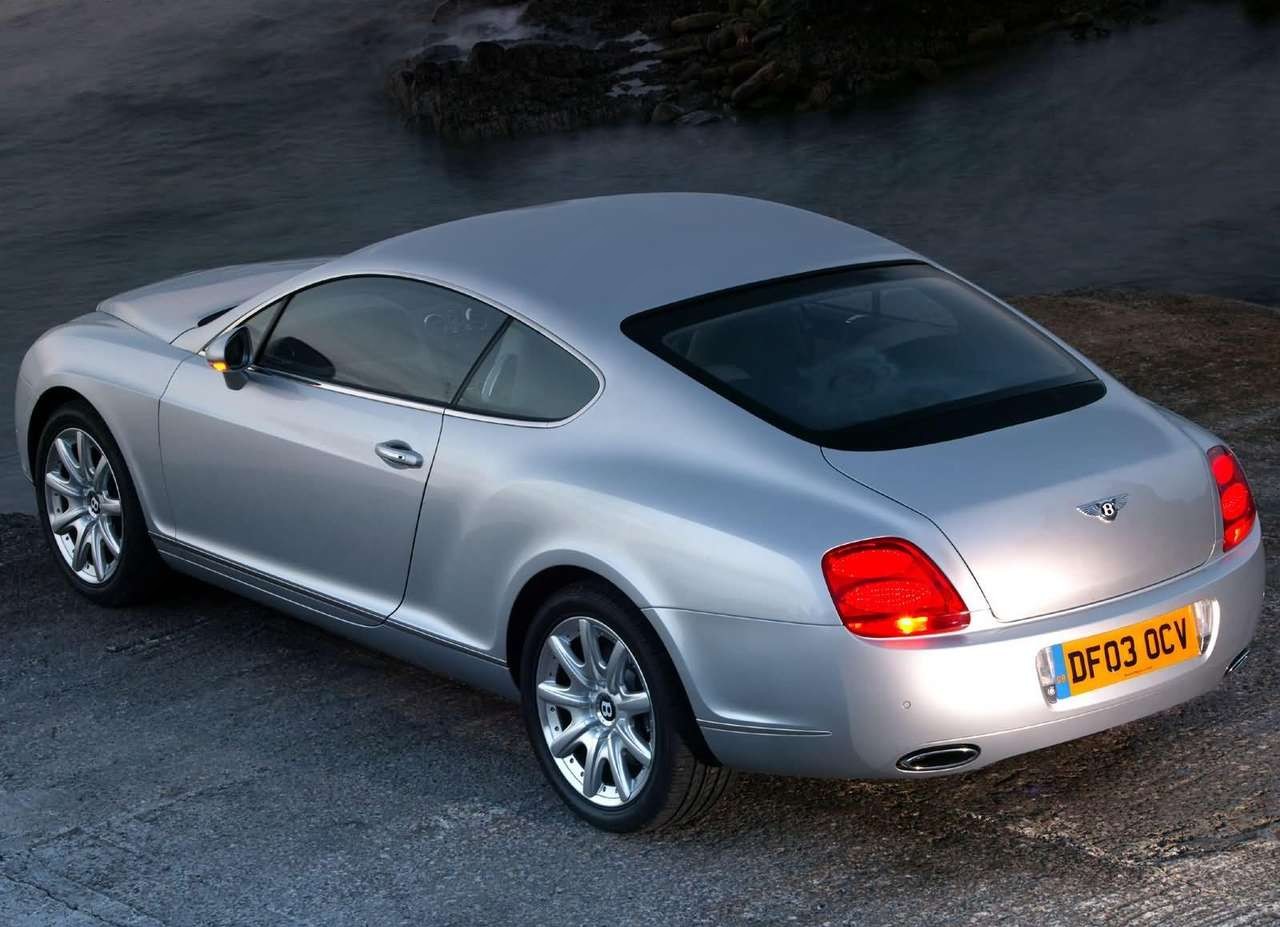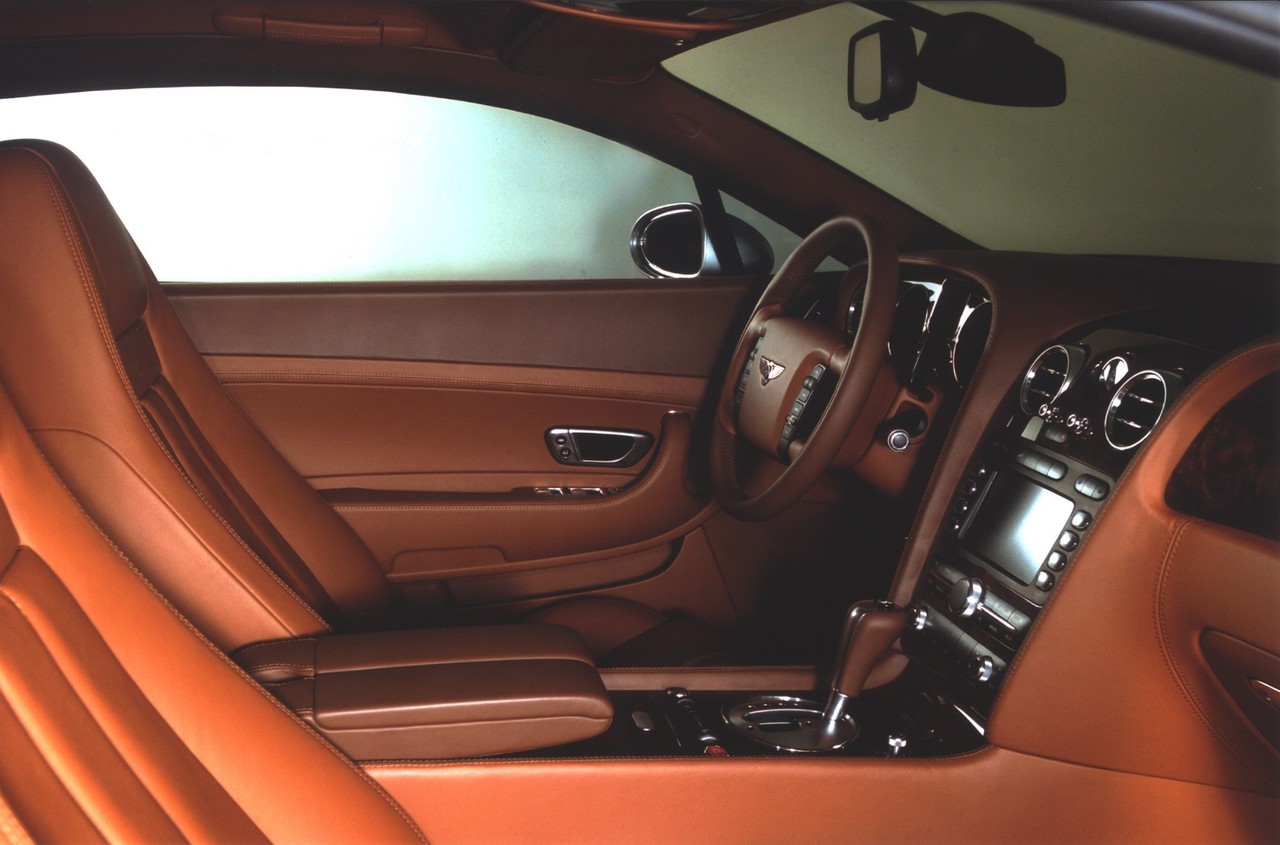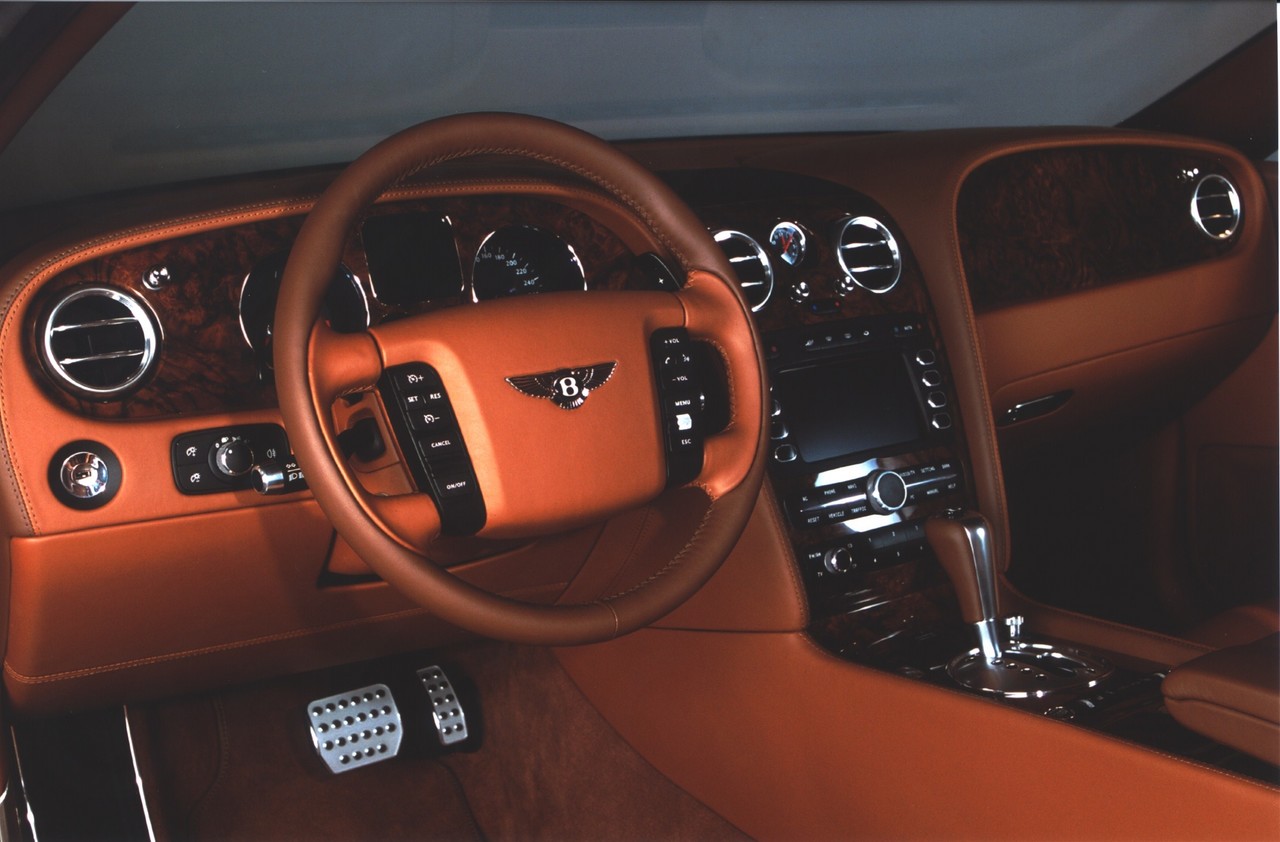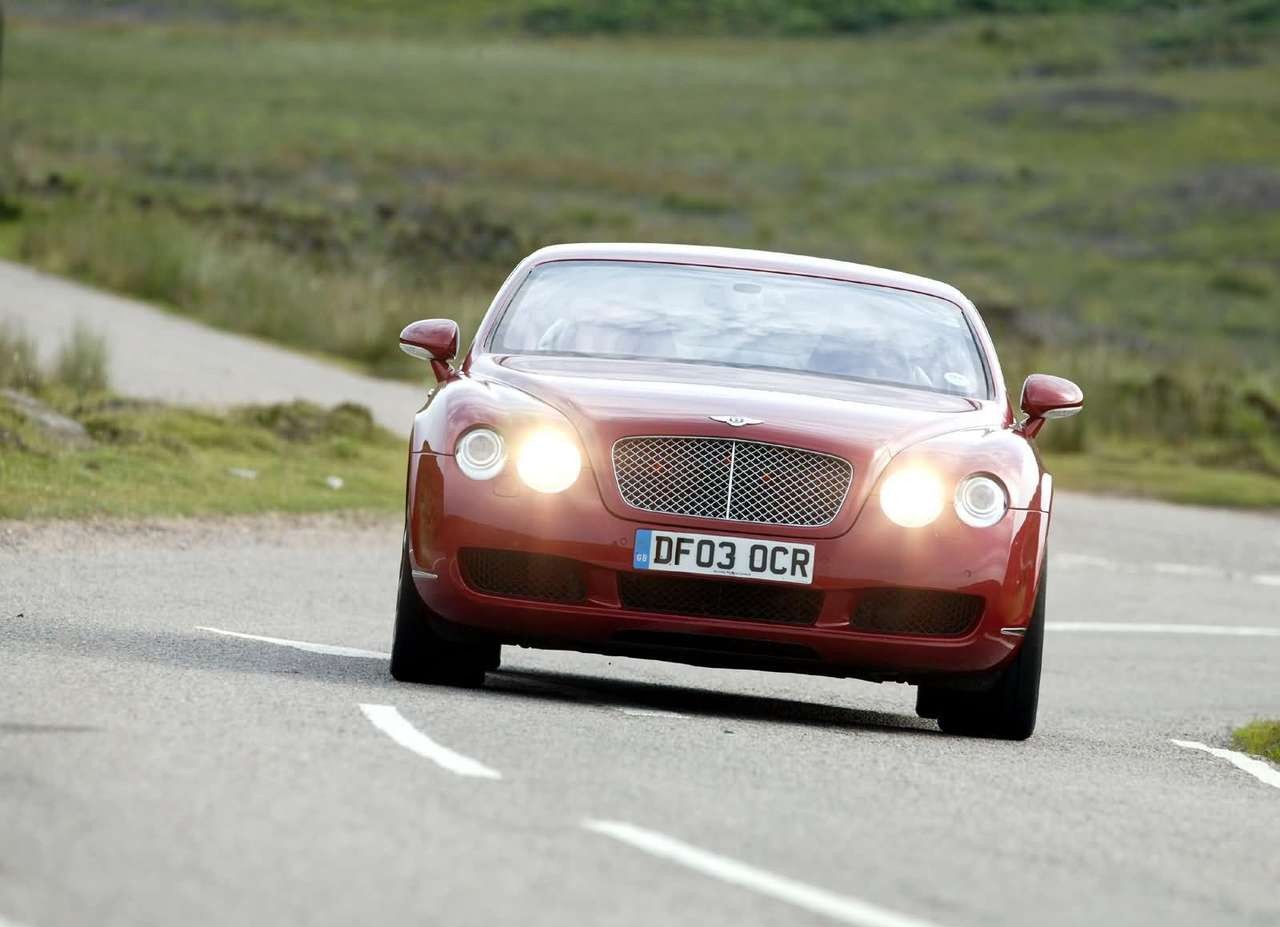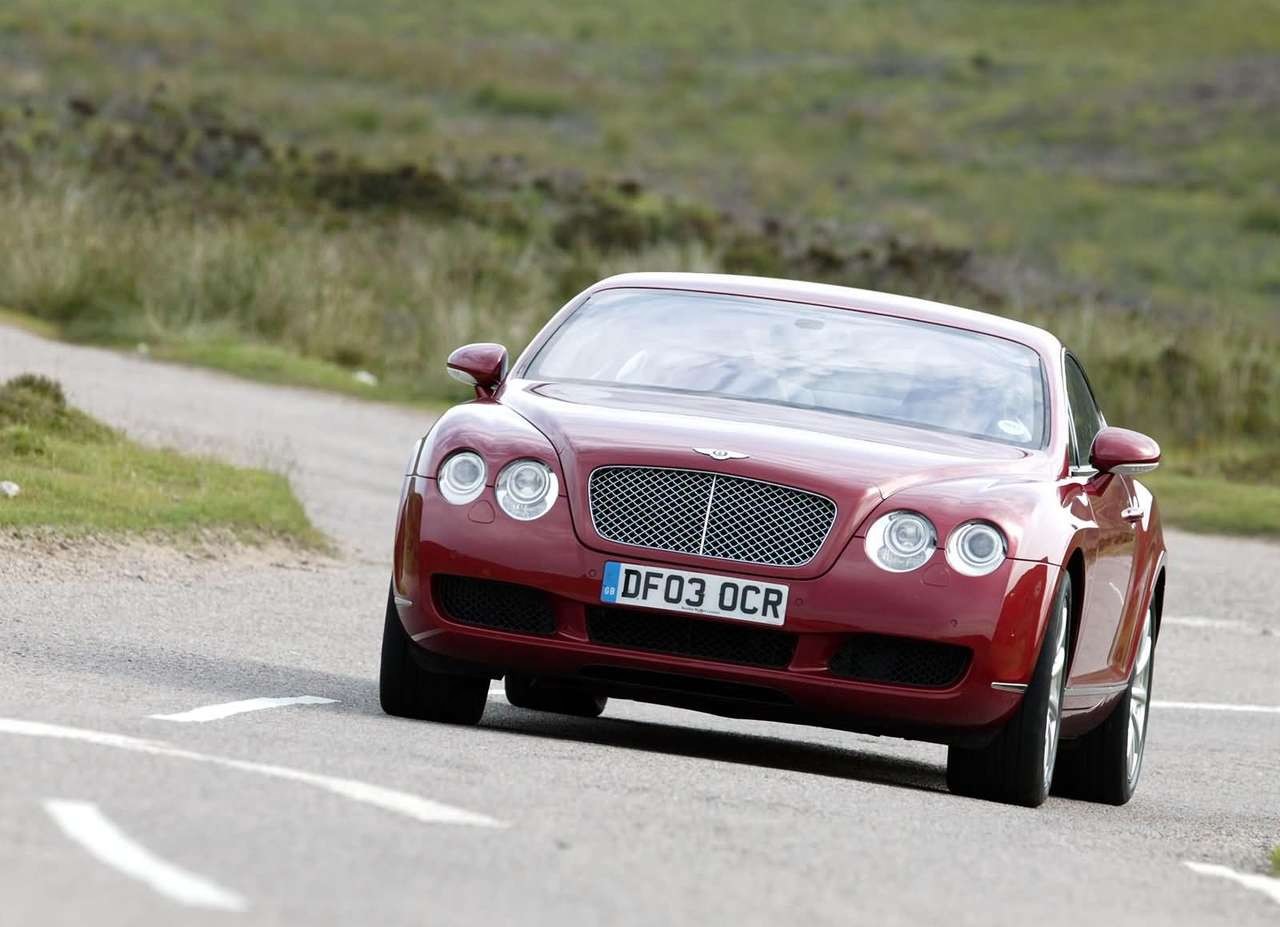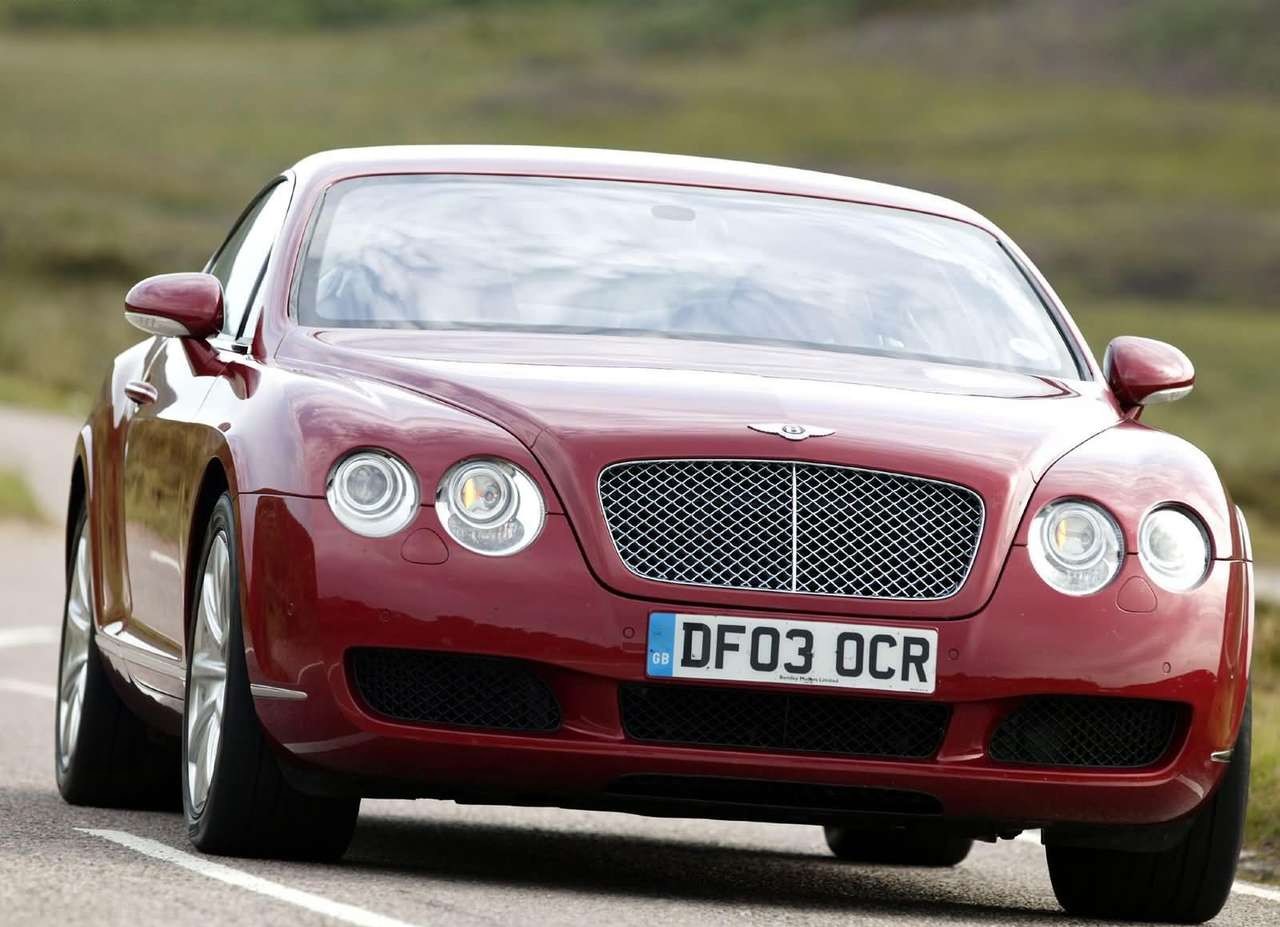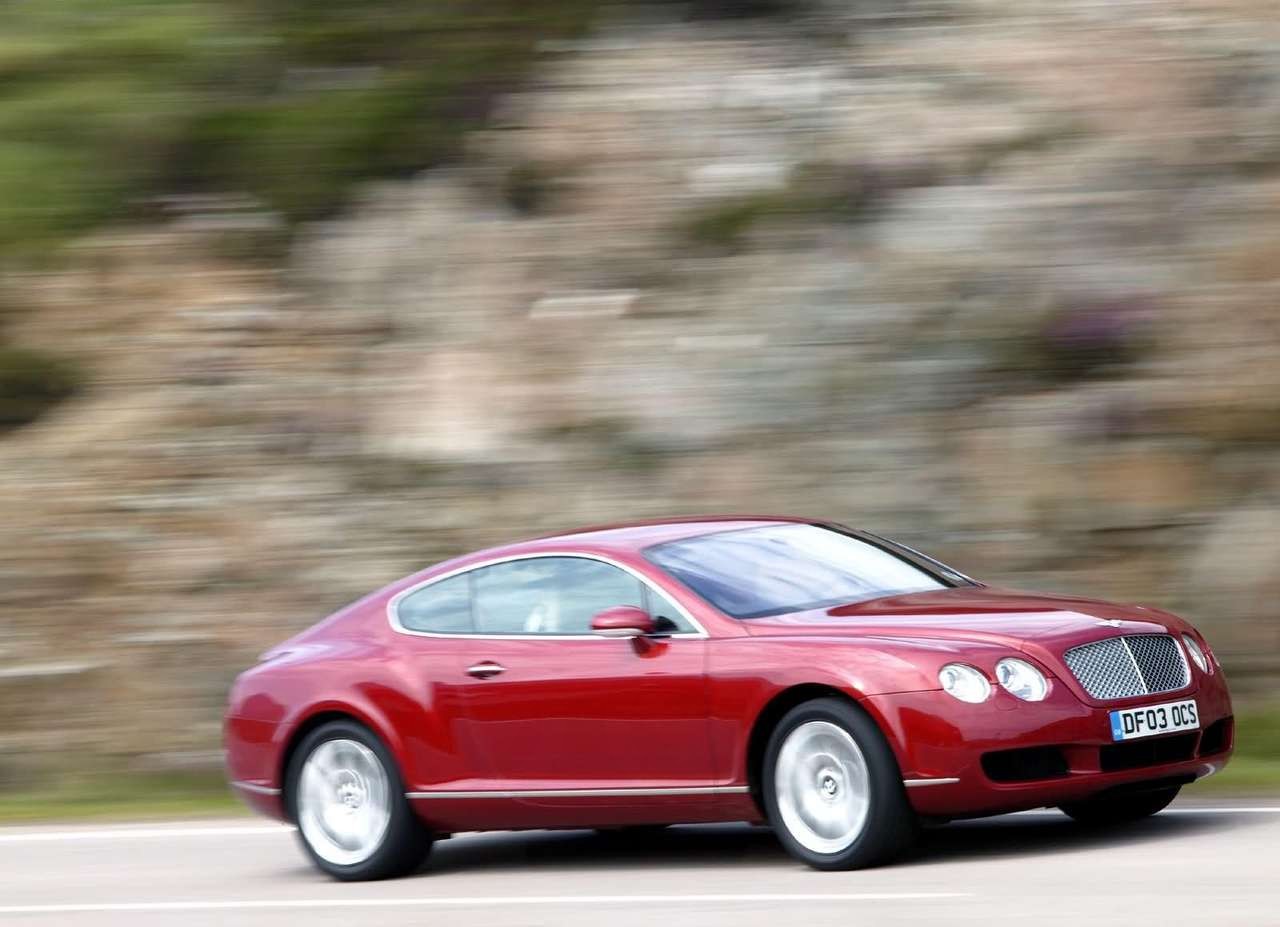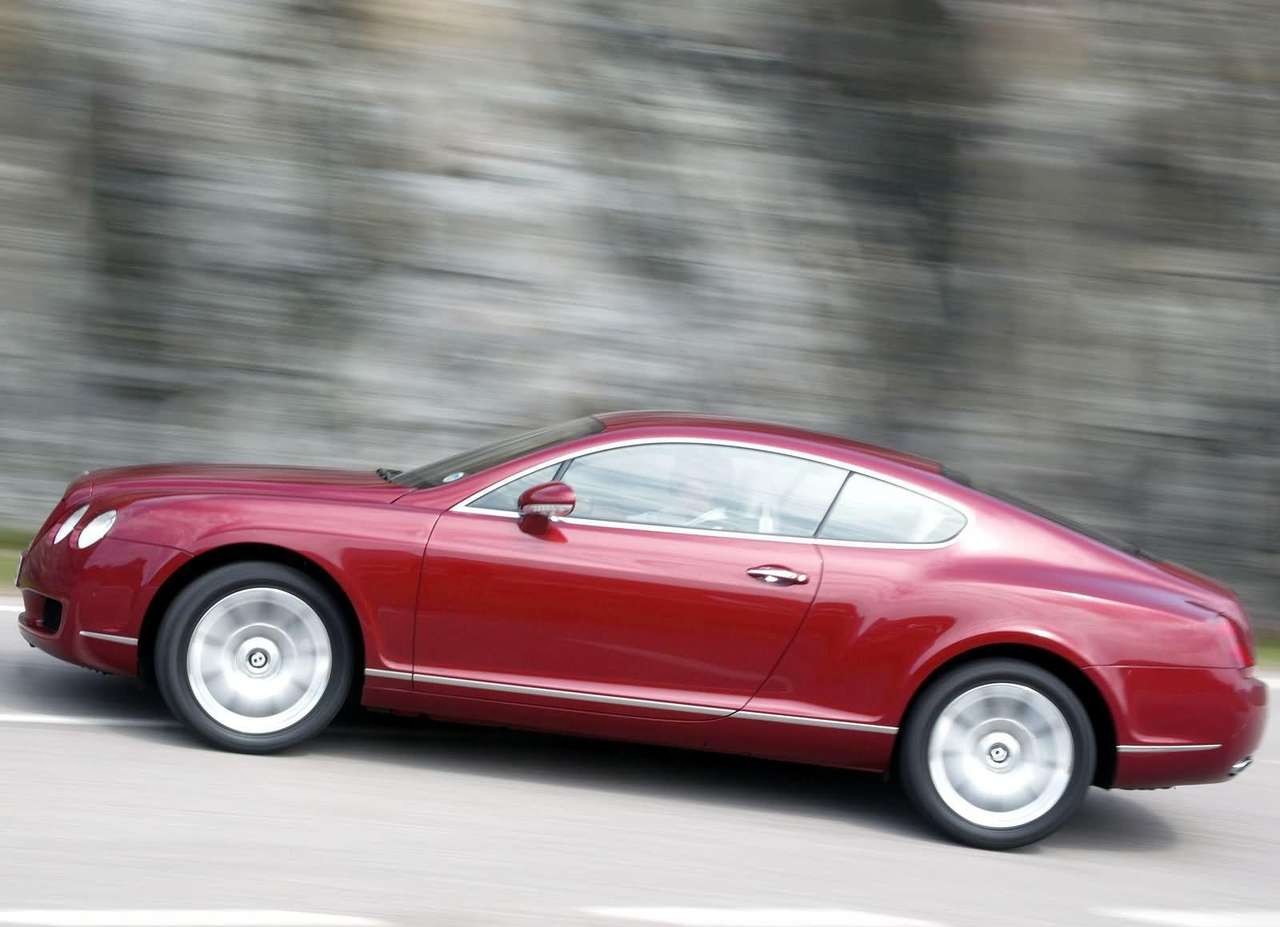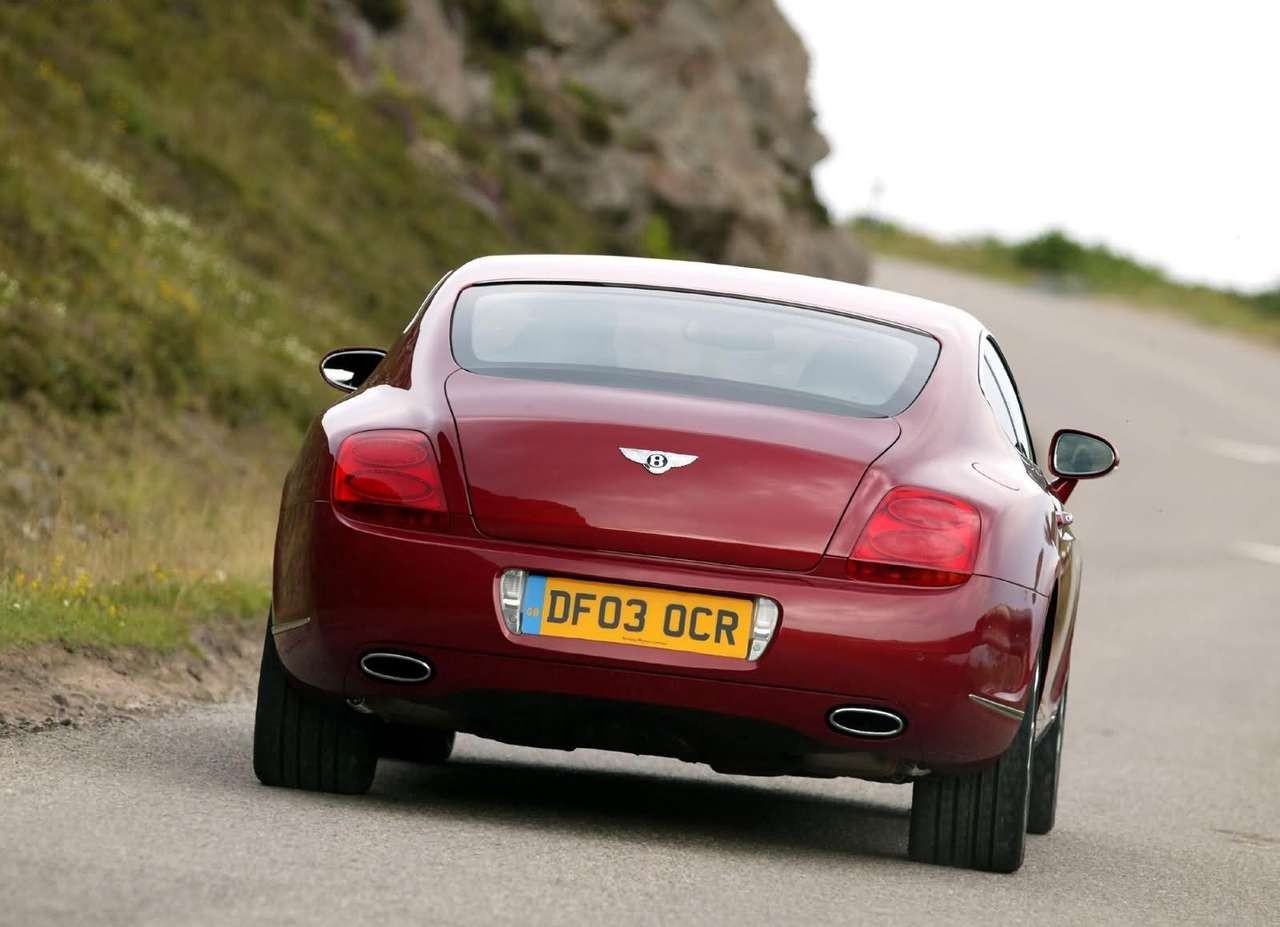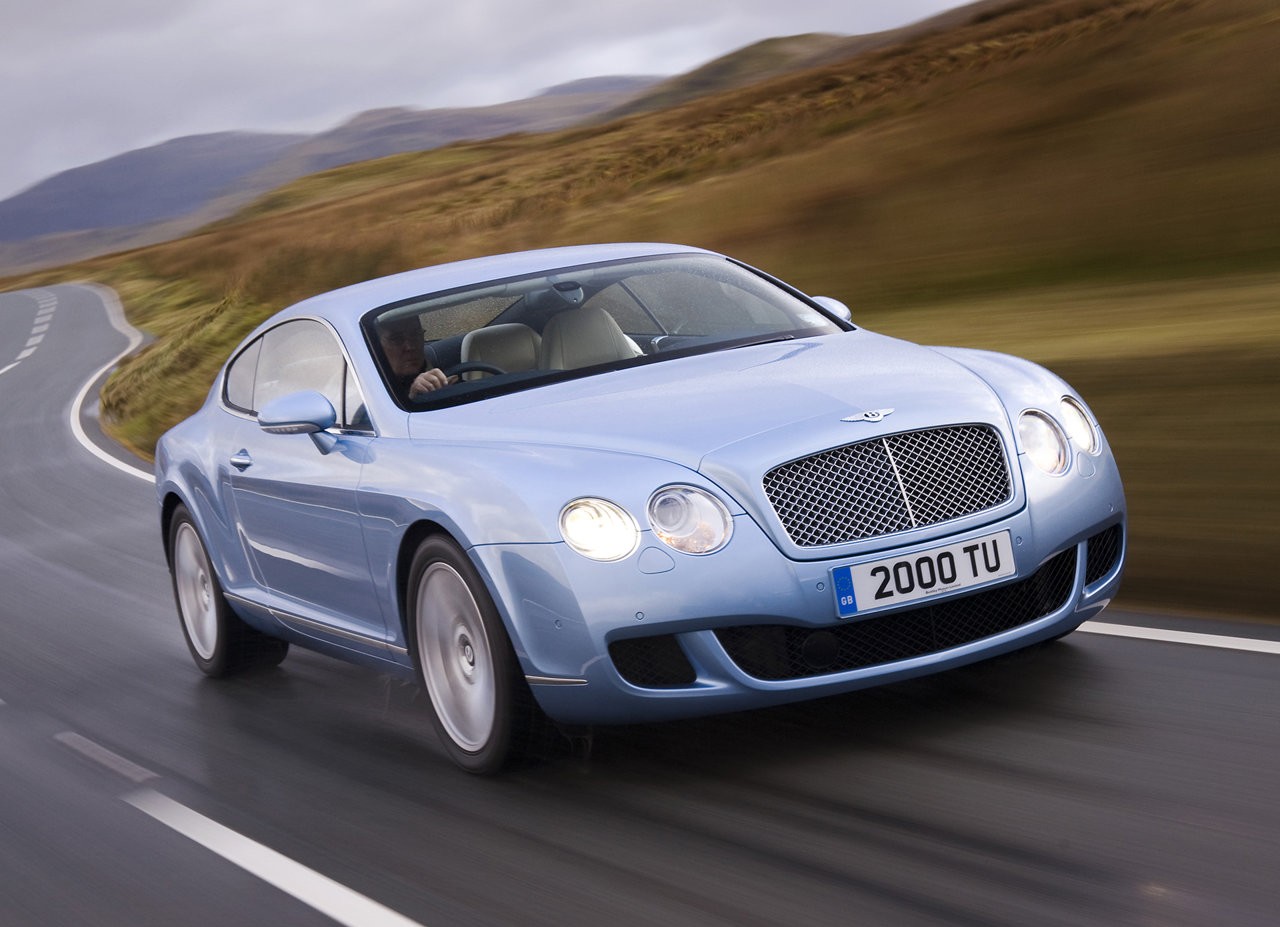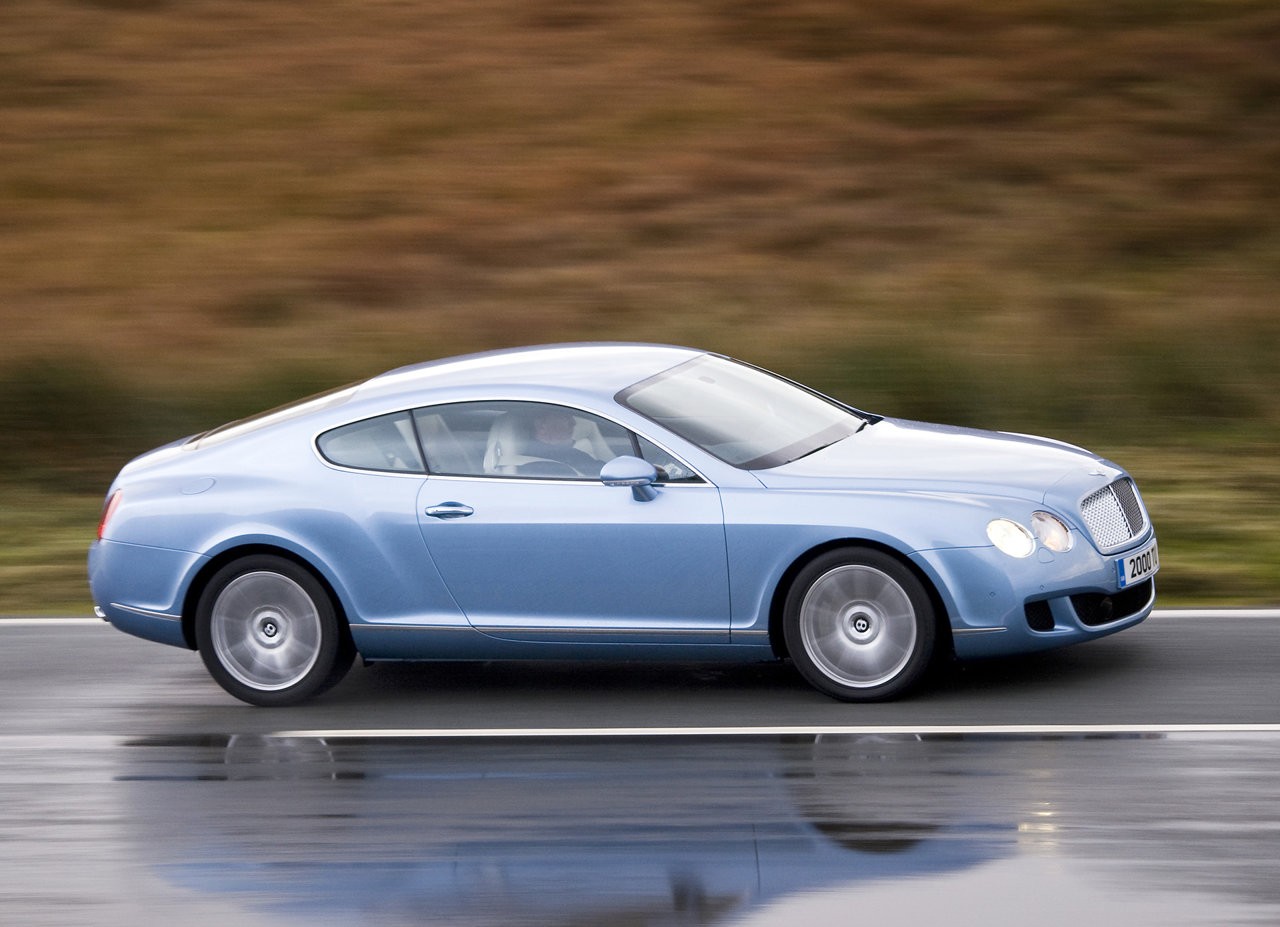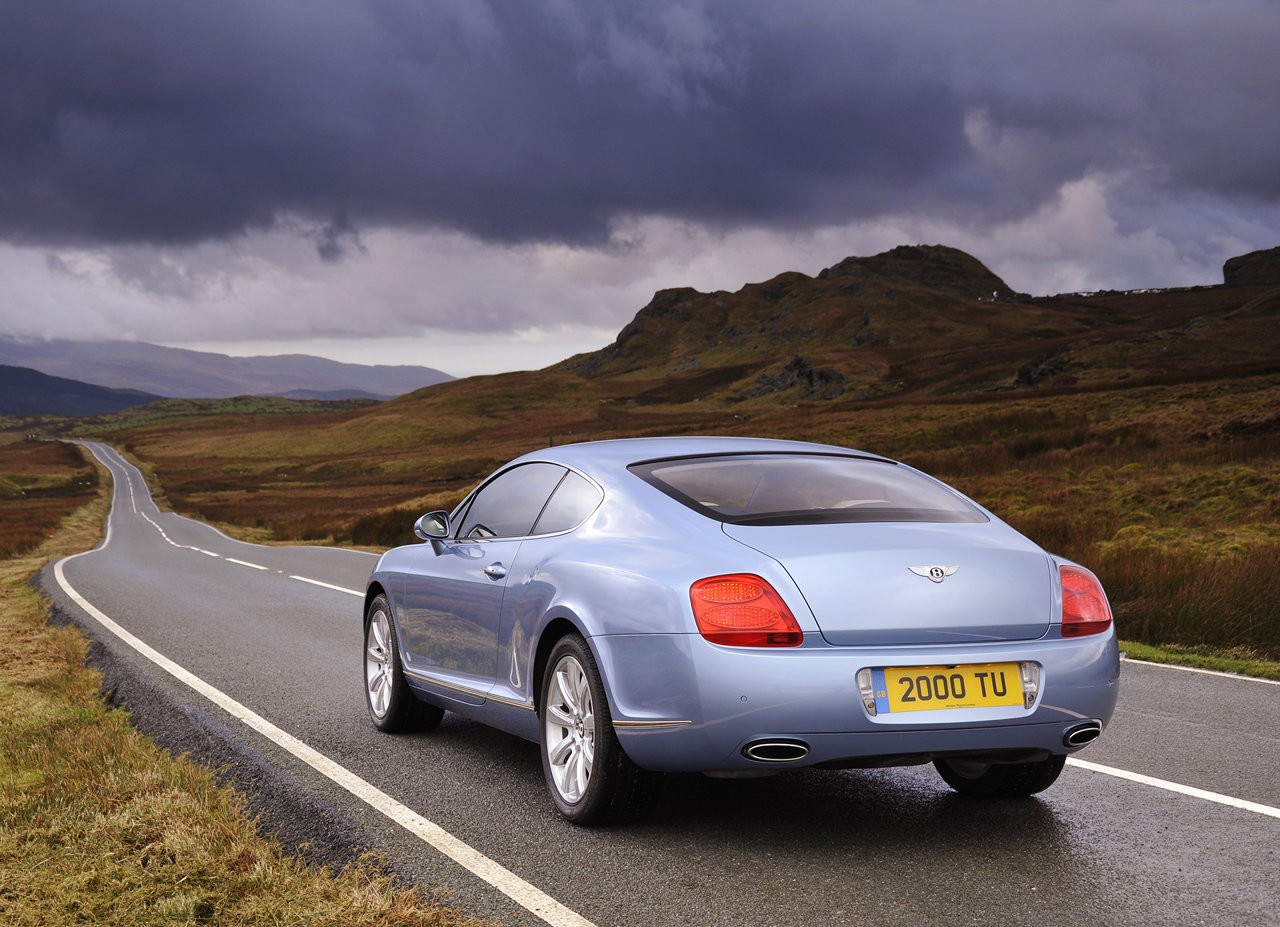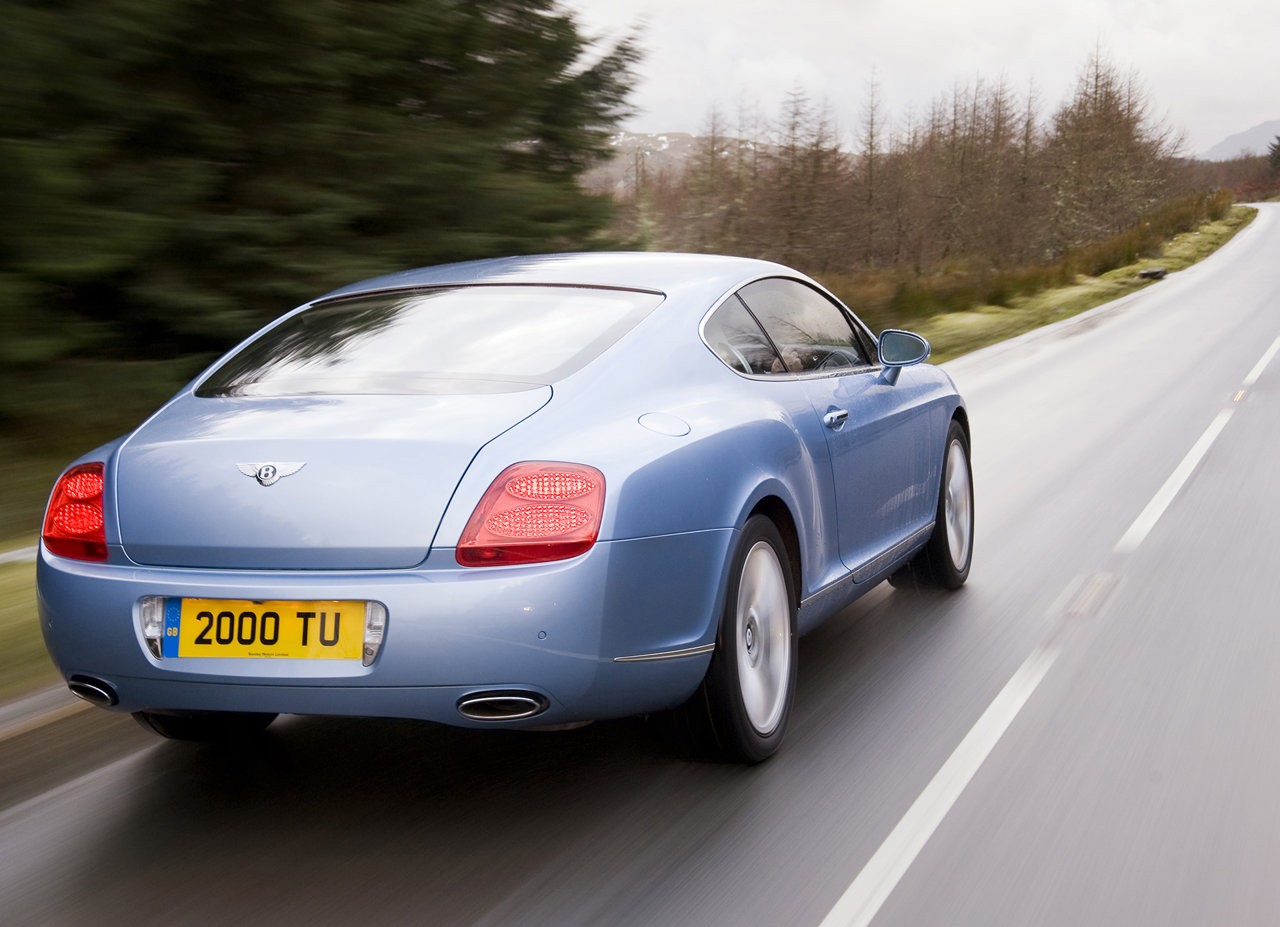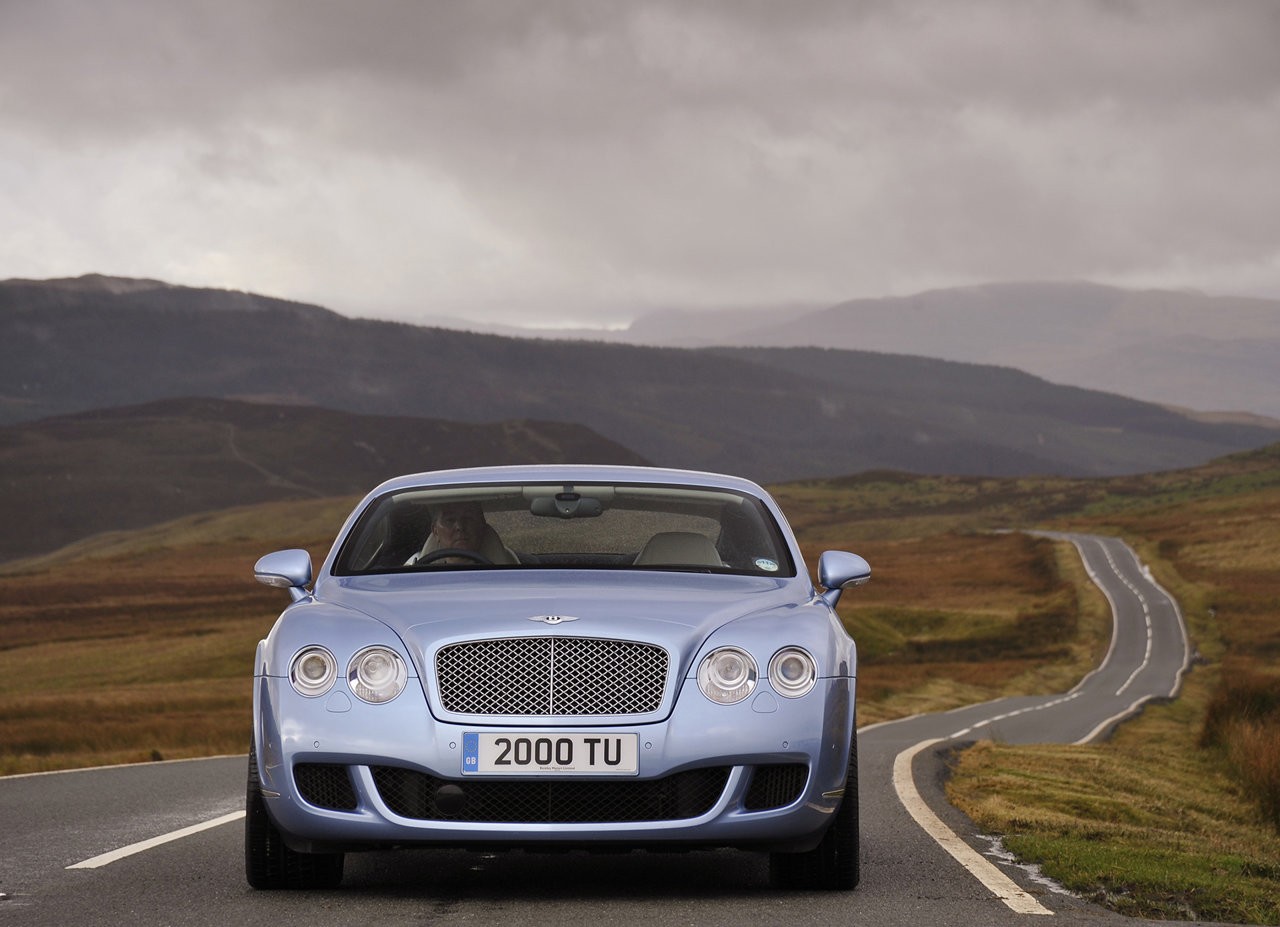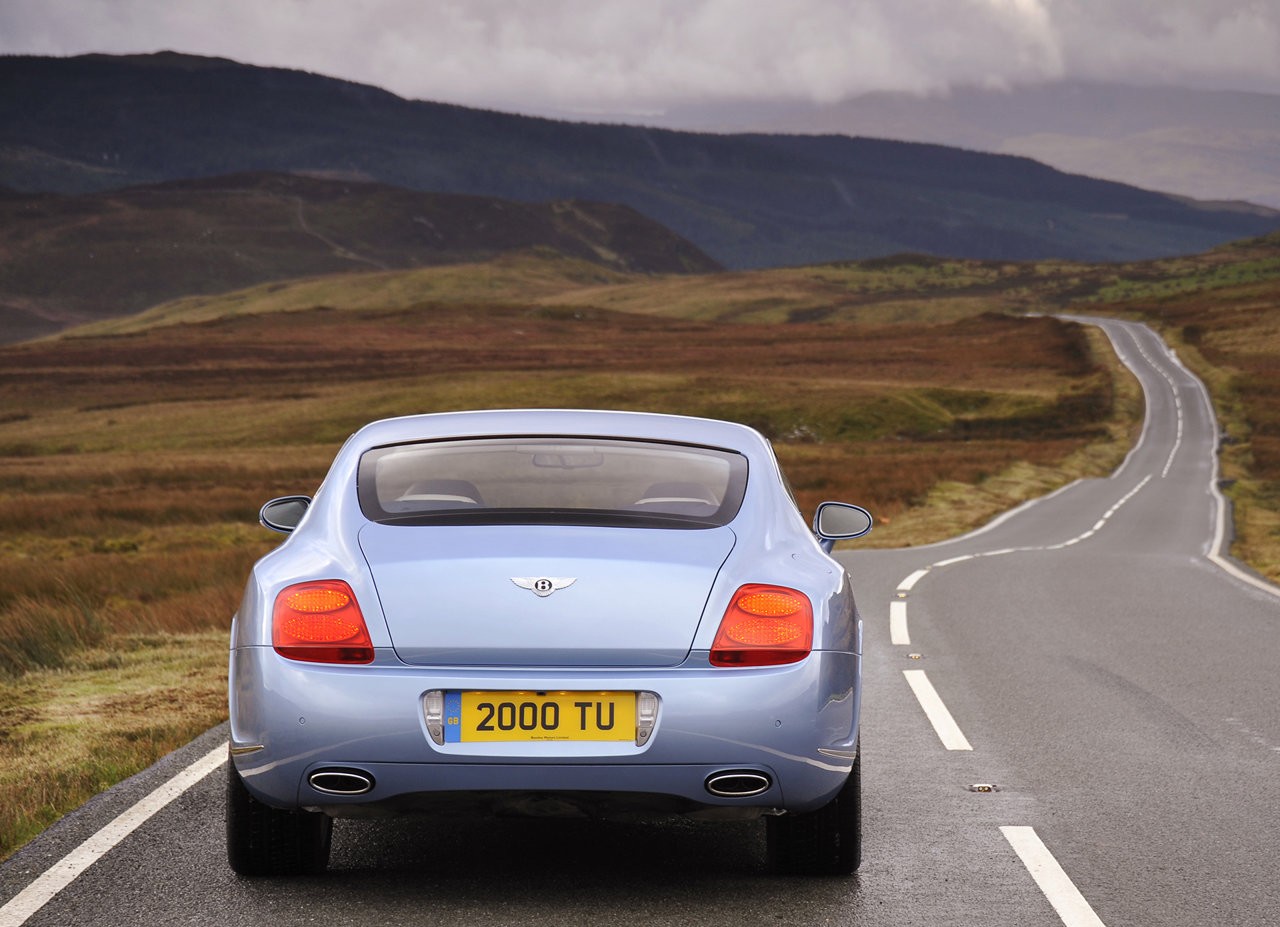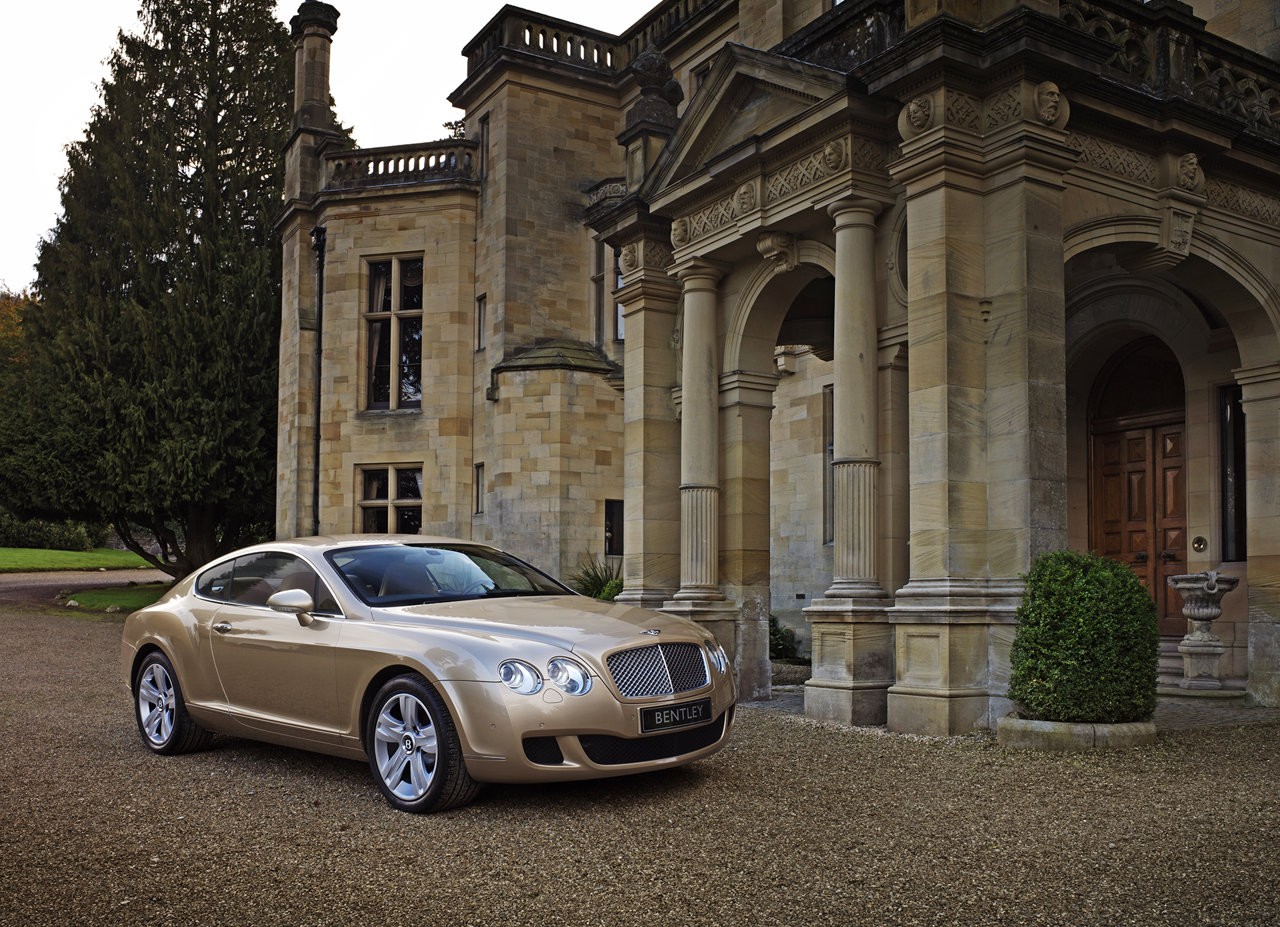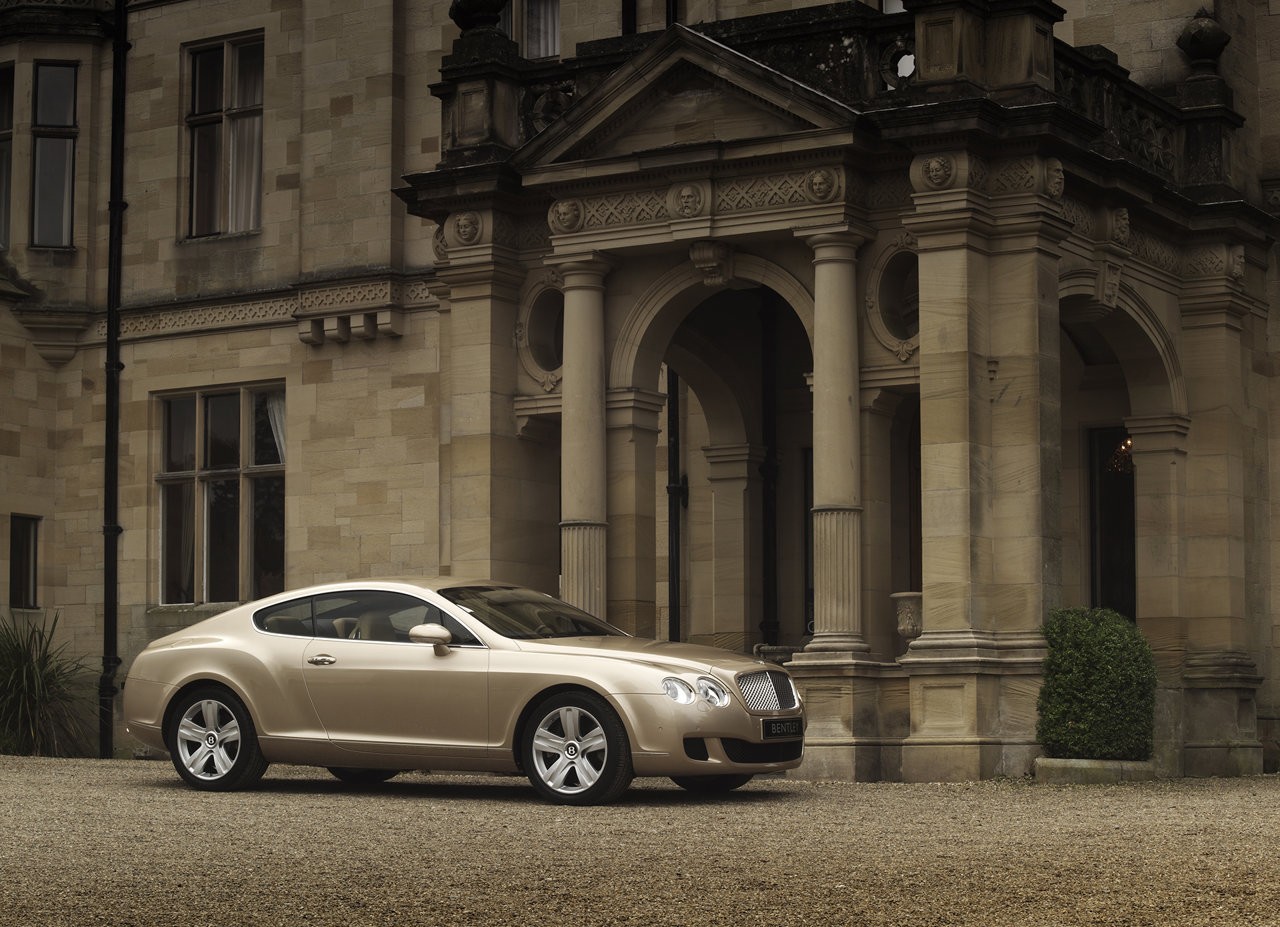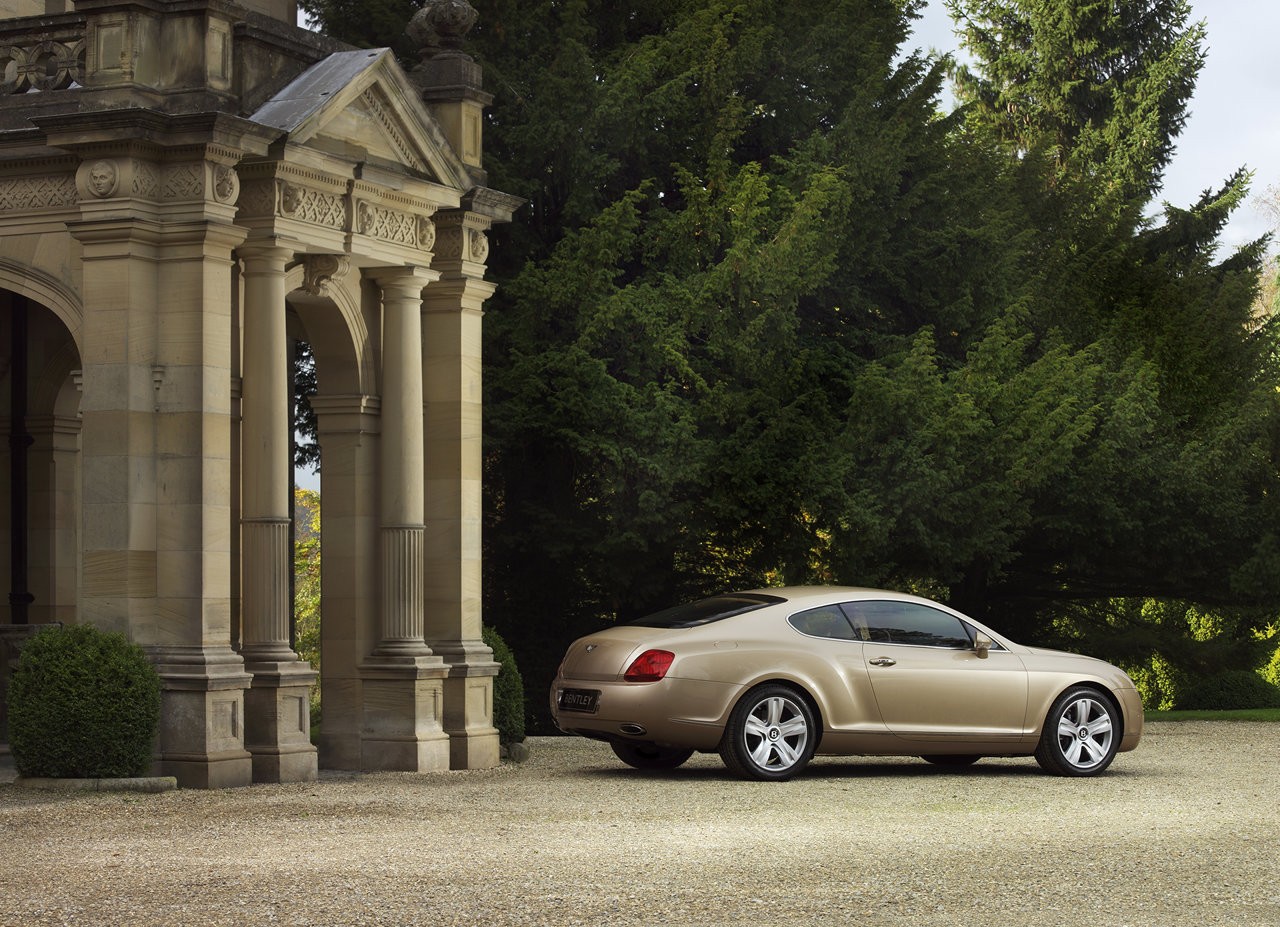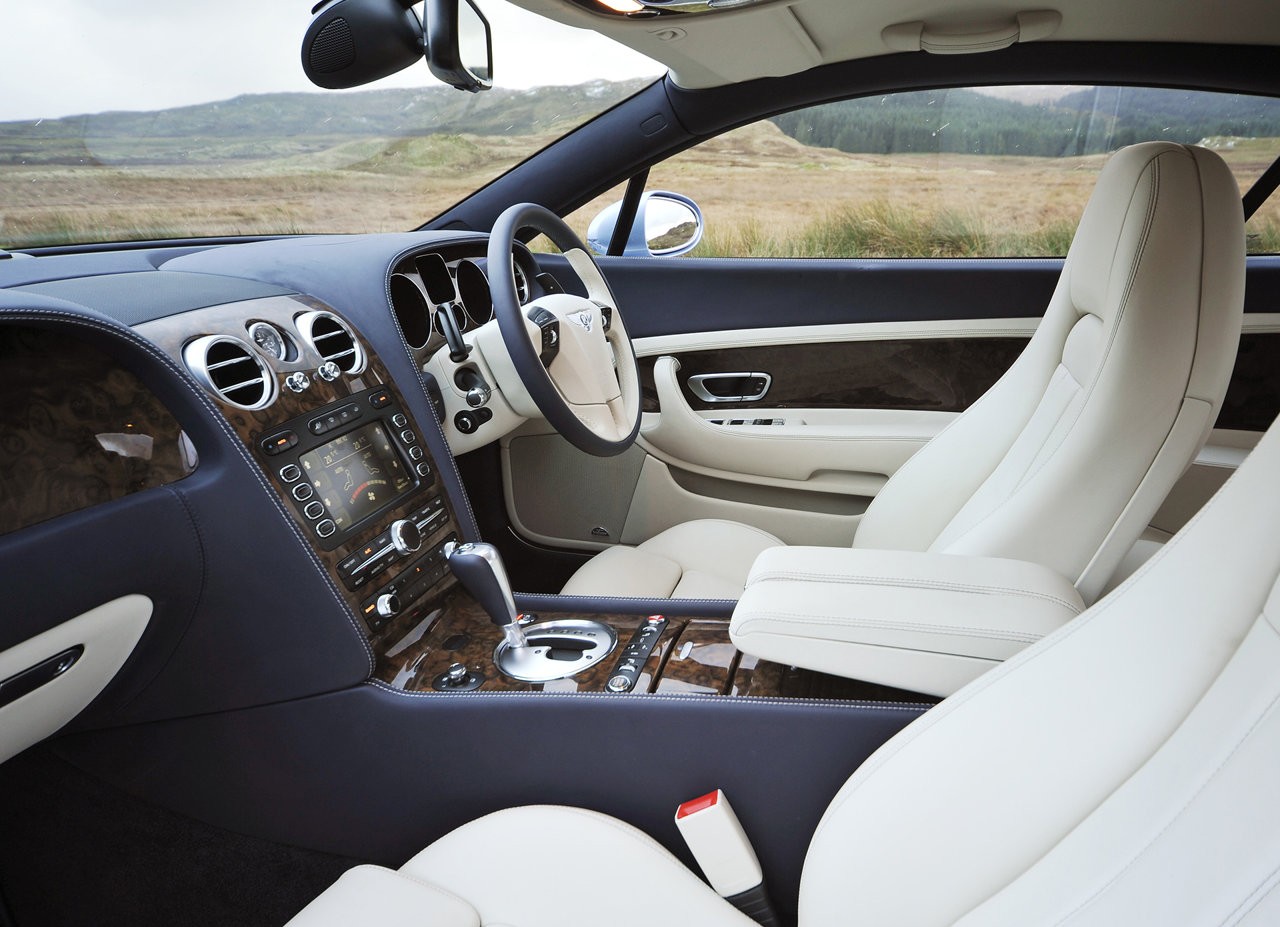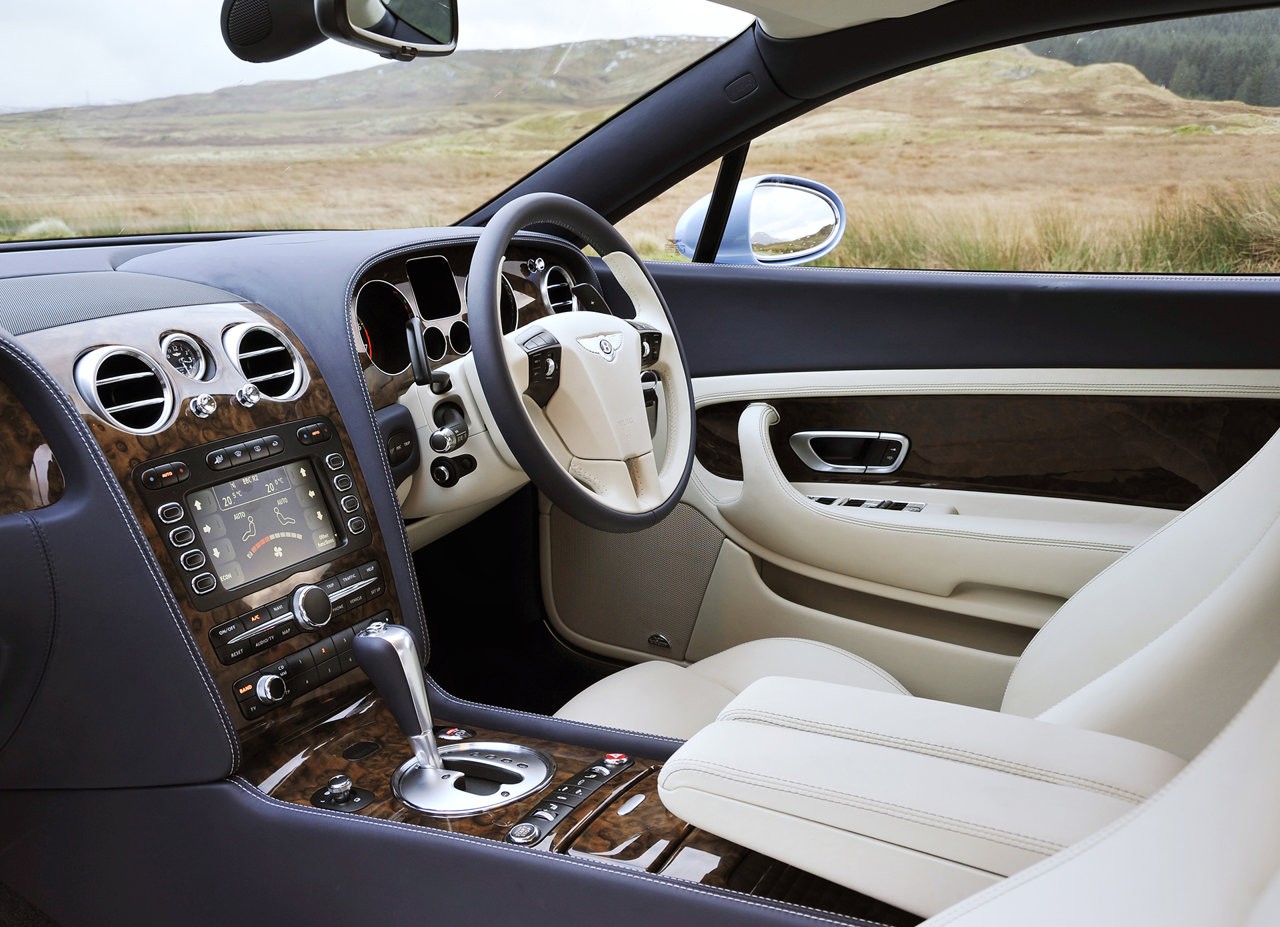
- Effortless 6.0-litre twin-turbo W12 engine
- Comfortable ride
- Prestigious interior materials
- Streamline moderne styling
- Weight blunts performance and agility
- Limited rear seat space
- Poor fuel efficiency
- High maintenance costs
Review: Bentley 3W.I Continental GT (2003-07)
Overview
Released in December 2003, the Bentley 3W Series I (3W.I) Continental GT was a four-seat, grand touring coupe. Manufactured in Crewe, England, the Continental GT was powered by a 6.0-litre twin-turbocharged W12 petrol engine that was which was mated to a six-speed ZF 6HP26A automatic transmission. Please note that the 3W Continental GTC and 3W Continental Flying Spur have been reviewed separately.
The 6.0-litre twin-turbo W12 petrol engine had four rows of three cylinders that were formed by combining two 15 degree VR6 engine cylinder blocks with each cylinder ‘double bank’ at a 72 degree angle. The engine featured twin KKK turbochargers (providing 0.7 bar boost pressure), air-to-air intercooling, double overhead camshafts per ‘VR’ cylinder bank, continuous vane-adjustable variable valve timing for intake and exhaust camshafts, four valves per cylinder and a compression ratio of 9.5:1.
The Continental GT was 4807 mm long, 1918 mm wide, 1390 mm high and had a 2746 mm long wheelbase. The Continental GT had four-link, double wishbone front suspension and trapezoidal, multi-link rear suspension. The suspension also included self-levelling air springs (front and rear) and continuously variable dampers.
| Years | Engine | Trans. | Peak power | Peak torque | |
|---|---|---|---|---|---|
| Continental GT | 2003-07 | 6.0-litre twin turbo petrol W12 | 6sp auto | 411 kW at 6100 rpm | 650 Nm at 1600-6100 rpm |
4WD system
The Continental GT’s permanent four-wheel drive system utilised a Torsen T-1 mechanical, self-locking centre differential. In normal conditions, the system provided a 50:50 front:rear torque split; if traction was lost, however, the system could redirect torque to the wheels with grip.
Safety equipment
Standard safety equipment included dual front airbags, front and rear side airbags, full-length curtain airbags, ABS, electronic brake force distribution, brake assist, electronic stability control, traction control, front and rear seatbelt pretensioners and front seatbelt load limiters.
The Continental GT was fitted 405 mm by 36 mm ventilated front brake discs and 335 mm by 22 mm ventilated rear discs.
Features
Standard features for the GT included 19-inch alloy wheels, a six-disc CD player, dual-zone climate control air conditioning, satellite navigation, leather upholstery, power adjustable front seats with memory settings, front seat heating and massage functions, cruise control, bi-xenon headlights, rain-sensing wipers, front and rear parking sensors, leather-wrapped steering wheel with gearshift paddles, remote central locking with proximity key, a tilt and reach adjustable steering wheel, TV tuner, power windows and door mirrors, heated and folding door mirrors, tyre pressure monitoring, a trip computer and an immobiliser.
Diamond Series
In early 2007, limited-run ‘Diamond Series’ editions of the Continental GT were released. Based on the 2007 model year ‘Mulliner Driving Specification’, the Diamond Series models were distinguished by their 20-inch 14-spoke alloy wheels, carbon-silicon carbide brakes, drilled alloy pedals, knurled chrome/cowhide gearlever and diamond-quilted hide to seat facings, doors and rear-quarter panels.
Bentley 3W.II Continental GT (2007-10)
Overview
Released in October 2007, the 3W Series II (3W.II) Continental GT had upgraded suspension with aluminium components, low-friction dampers for improved ride comfort and revised steering for greater feel and feedback.
Although outputs for the 6.0-litre W12 engine were unchanged, greater refinement and efficiency was achieved through the introduction of a new crankcase, a more efficient catalyst and exhaust system, a lighter weight single chain drive for the camshaft, a new engine management system and a more responsive camshaft sensor.
Visually, the 3W.II Continental GT could be identified by its wider lower air intake, more upright radiator grille and chromed headlight bezels.
| Years | Engine | Trans. | Peak power | Peak torque | |
|---|---|---|---|---|---|
| Continental GT | 2007-10 | 6.0-litre twin turbo petrol W12 | 6sp auto | 411 kW at 6100 rpm | 650 Nm at 1600-6100 rpm |
| Continental GT Speed | 2007-10 | 6.0-litre twin turbo petrol W12 | 6sp auto | 449 kW at 6000 rpm | 750 Nm at 1750 rpm |
| Continental Supersports | 2009-10 | 6.0-litre twin turbo petrol W12 | 6sp auto | 463 kW at 6000 rpm | 800 Nm at 1700-5600 rpm |
Safety equipment
The 3W.II Continental GT was fitted with a Bosch 8.1 electronic stability control (ESC) system which included a ‘Sports Traction’ mode. For the Continental GT Speed, the ESC system also included a ‘Dynamic’ mode that permitted increased wheel slip at higher speeds.
Features
Compared to its 3W.I predecessor, standard features for the 3W.II Continental GT were extended Bluetooth connectivity and a park assist display.
Continental GT Speed
Coinciding with the October 2007 update, the Continental GT Speed was released; the Speed variants were distinguished by their 20-inch alloy wheels with Pirelli P-Zero tyres, sports suspension settings (lowered ride height, uprated springs, dampers and anti-roll bars), faster Servotronic steering ratios, ‘dynamic’ mode for the new Bosch 8.1 electronic stability control system and Mulliner Driving Specification features (as listed above for the Diamond Series).
Continental Supersports
In December 2009, the high performance Supersports variant was released. The Supersports was strictly a two seater – it only had two carbon-fibre buckets – and, compared to the Speed, was 110 kg lighter. Unlike the standard Continental GT, the Supersports had a Torsen T-3 centre differential which provided a 40:60 front:rear torque split. The ZF transmission was also revised to provide 50 per cent faster gearshifts and double-downshifts.
The Supersports was fitted with 20-inch alloy wheels with 275/35 ZR20 Pirelli Ultra High Performance tires, stiffer suspension bushes, a retuned anti-roll bar and continuous damping control. Furthermore, the Supersports had carbon fibre-reinforced silicon carbide ceramic brake discs, with 420 mm front brake discs with eight-piston calipers and 356 mm rear discs with dual-piston calipers.
Visually, the Supersports could be identified by its flared rear wheel arches and dark-smoked steel finish for front grille, lamp bezels, window surrounds and wheels.
Brochure
Related links
